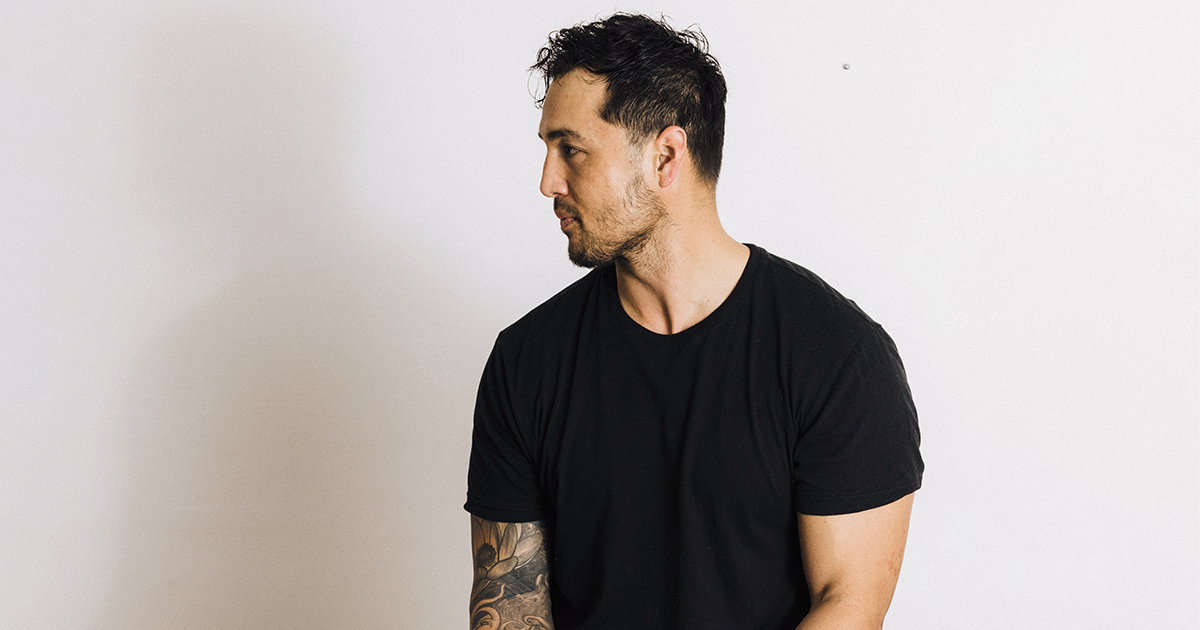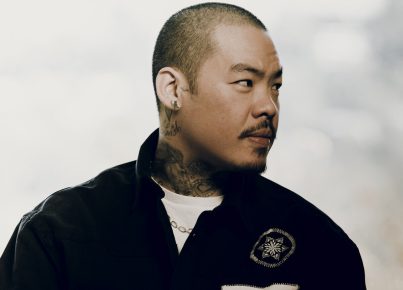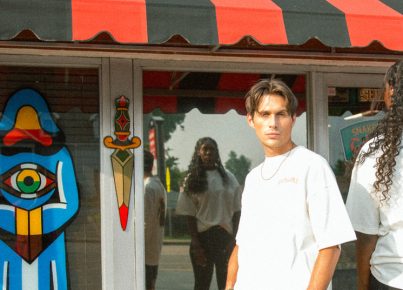Photos by Jessica Maher
Aside from the one class he took in sixth grade, art was never at the front of Chris Gocong’s mind as he grew up in California. His passion was on the gridiron, where his skills as a linebacker, especially his knack for getting to the quarterback, led to star status at Cal Poly. After the Philadelphia Eagles drafted him in the third round, Gocong played professionally for seven seasons. Then he laid down his helmet and picked up a paint brush, and hasn’t stopped painting. We spoke with the artist about the career switch, collaborating with other artists and much more.
Do you remember the first time you fell in love with art?
For the first 30 years of my life, I didn’t care about art or understand it at all. I remember seeing the Mona Lisa for the first time at the Louvre and wondering why so many people were taking pictures of an underwhelmingly small, boring painting.
It wasn’t until I retired from football, around the age of 30, that I began to appreciate how art can affect someone to feel a certain way, regardless of how long ago it was created. My love for art began when I first picked up a brush a few years ago and discovered how the act of creating put me in a flow state. For the record, I still don’t understand art.

You have a very unusual background—not many people go from playing in the NFL to being a painter. How did this transition happen?
After playing 16 years of tackle football, including seven professionally, I came away with my fair share of repetitive traumatic brain injuries. Soon after retiring I noticed irregularities in my thinking, mood swings, short-term memory issues, depression, anxiety; neurologists correlated my symptoms as symptoms of CTE [chronic traumatic encephalopathy].
Being a proactive person by nature, I explored everything from zapping my brain (tDCS), neurofeedback, meditation—the list goes on. Then one day I started painting in my garage. Four hours passed without me noticing, and I felt as if my brain and body no longer carried tension. I fell in love with how the process of painting made me feel, physically and mentally.
I wouldn’t say I have more passion for football or art; I put the same amount of energy into the things I love doing. For many years, that was the physical and mental preparation to go to war on the field—lining up in front of someone and going full out trying to physically dominate. The exhilaration of feeling 70,000 people go nuts after a big play is unexplainable. Unfortunately, sustaining that level of performance in professional football is something you can only do for so many years.
Now that I’m retired, I’ve found art as a way to decompress and explore parts of my brain that were previously untapped. Creating something out of nothing—from an idea to a valuable piece on the wall—this process of creating has become just as exhilarating.

Do you see any correlations between playing football and painting?
Playing football and doing art seem like they have nothing in common, but for me they both involve similar skill sets. Both require a combination of intentionality along with a state of non-thinking, where listening to intuition is key. If you second-guess your instinct in football, you’re slow, and if you’re slow you’re out of a job. Painting, especially abstract painting, is much the same way. Second guessing makes the painting look forced. Everything from the palette, composition and execution must be in harmony to create a great piece.

Did getting into painting help ease your transition out of the NFL?
I’ve never been one to define myself as what I do. Mentally, the transition away from football was easy in some ways and hard in others: A part of me felt relief, another part grieved, but most of me was excited to explore new things. Painting is my meditation; it has helped all those different parts of me come closer to being whole.

Can you describe your painting style and how you found it?
My style has progressed from tight and controlled to chaotic within boundaries. I would describe my paint strokes as pure scribbling with a brush. I let the brush do whatever it wants like my hand is talking in tongues. Then I’ll layer lows, midtones or highlights as I see fit. Recently I’ve ditched the brushes in favor of squirt bottles, embracing the unpredictability of the paint.

You’ve collaborated with Rod Lathim on some of your art pieces, like the David Bowie portrait featured here, making them mixed media with paint and neon. What can you share about the process and how this came together?
Working in collaboration with Rod was freeing in many ways. The pure, hot color produced by the neon allows for contrasts I just can’t achieve with paint. Secondly, it forced me to think beyond the two dimensions of the canvas. Our first collaborative piece, “Memento Mori,” took a 6-foot by 6-foot painting of a crowned skull and added 52 feet of white neon to highlight the surrounding gestural accents, going over the canvas borders on all four sides. It’s nothing short of stunning to see in person.

Tell us a little about painting those Jordans we saw you do on your Instagram. Where did the inspiration come from?
Like an idiot, I bought a $900 pair of off-white denim Jordan 4s and realized I couldn’t wear them without destroying them. They sat in my closet for years until I said to myself, “Fuck it—why do I have these if I can’t wear them?” Better yet, I’ll take these and create something one of a kind. My inspiration in elevating these sneakers was to say, “Yes, enjoy art, wear it, create it.”







